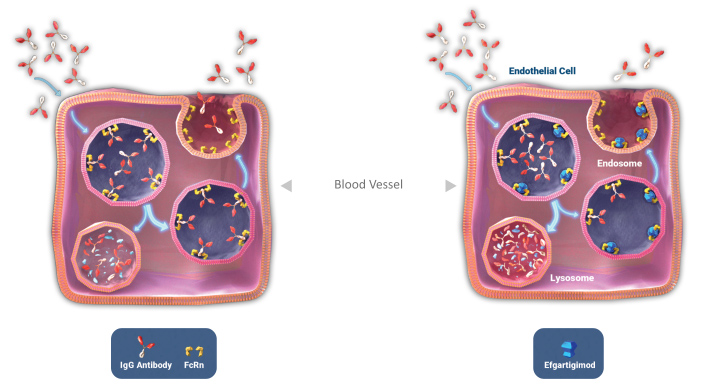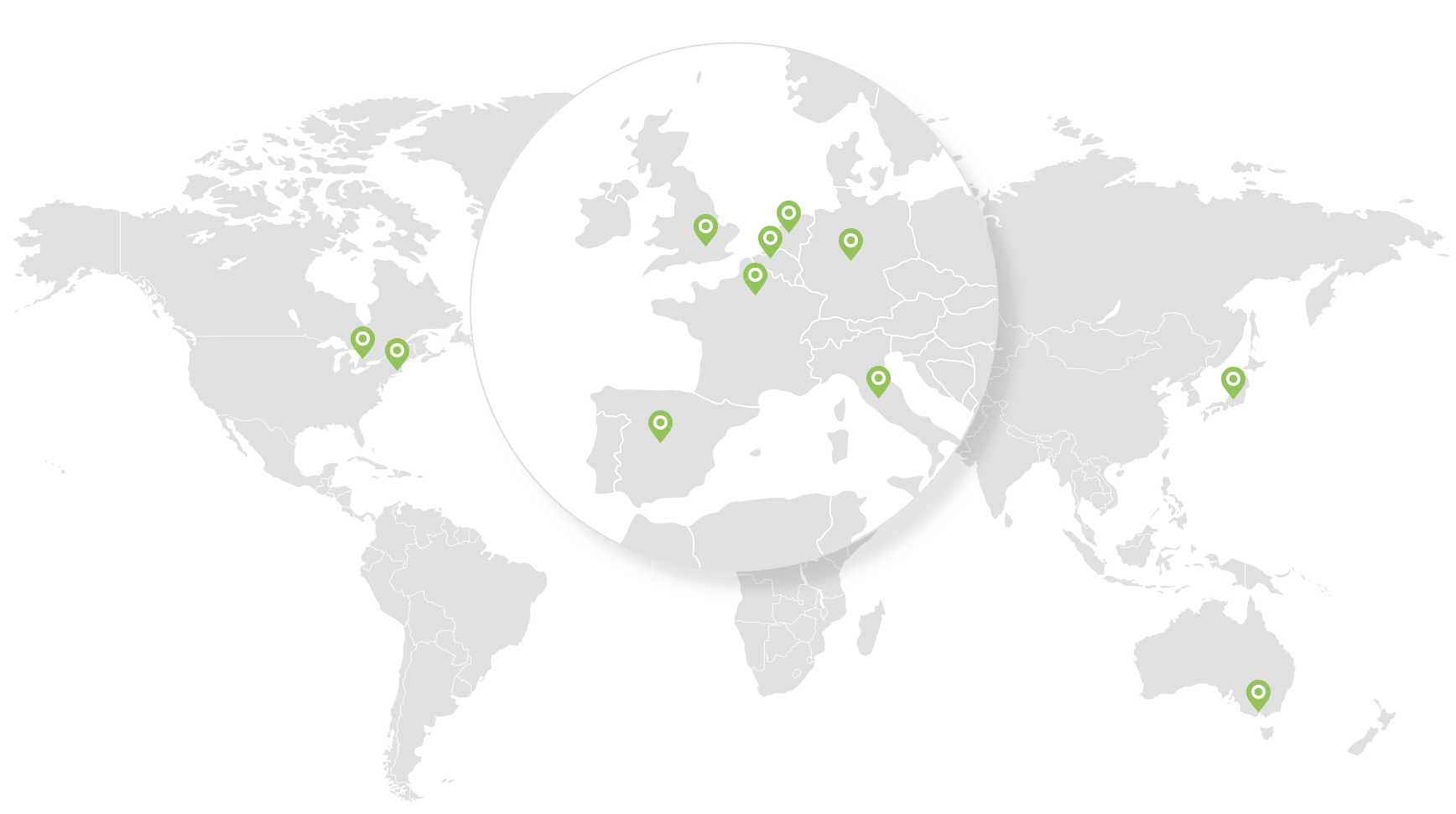Targeting Removal of
Pathogenic IgG
Proposed Mechanism of Action - Efgartigimod
IgG Recycling in Vascular Endothelium* |
Efgartigimod†: Proposed Mechanism of Action |
 |
|
|
* IgG recycling also occurs in other cell types (eg, monocytes); only endothelial cells shown for illustration. The neonatal Fc receptor (FcRn) is known to extend half-life and availability of pathogenic IgG antibodies. FcRn has been shown to bind IgGs and rescue them from lysosomal degradation, extending IgG half-life (~21 days) compared to IgM or IgA (~5 days), not recycled by FcRn3-5. Prolonged half-life of pathogenic IgGs has been shown to increase their ability to impair the neuromuscular transmission6. |
† VYVGARTTM (efgartigimod alfa-fcab) is approved in the US for gMG. Studies have shown that efgartigimod can bind and block FcRn, reducing IgG antibodies. Efgartigimod, an IgG1 Fc fragment, is designed for increased affinity for FcRn7. It competes with IgG to occupy FcRn and reduce overall IgG recycling7. In preclinical and clinical studies, efgartigimod has been shown to rapidly and consistently reduce IgG levels without impacting IgM, IgA, or albumin7,8. |
REFERENCES: 1. Gilhus NE. N Engl J Med. 2016;375(26): 2570-2581. 2. Koneczny I, Herbst R. Cells. 2019;8(7):671. 3. Ward ES, Ober RJ. Trends Pharmacol Sci. 2018;39(10):892-904. 4. Pyzik M, Sand KMK, Hubbard JJ, Andersen JT, Sandlie I, Blumberg RS. Front Immunol. 2019;10:1540. 5. Waldmann TA, Strober W. Progr Allergy. 1969;13:1-110. 6. Liu L, Garcia AM, Santoro H, et al. J Immunol. 2007;178(8):5390-5398. 7. Ulrichts P, Guglietta A, Dreier T, et al. J Clin Invest. 2018;128(10):4372-4386. 8. Huijbers MG, Plomp JJ, van Es IE, et al. Exp Neurol. 2019;317:133-143.
